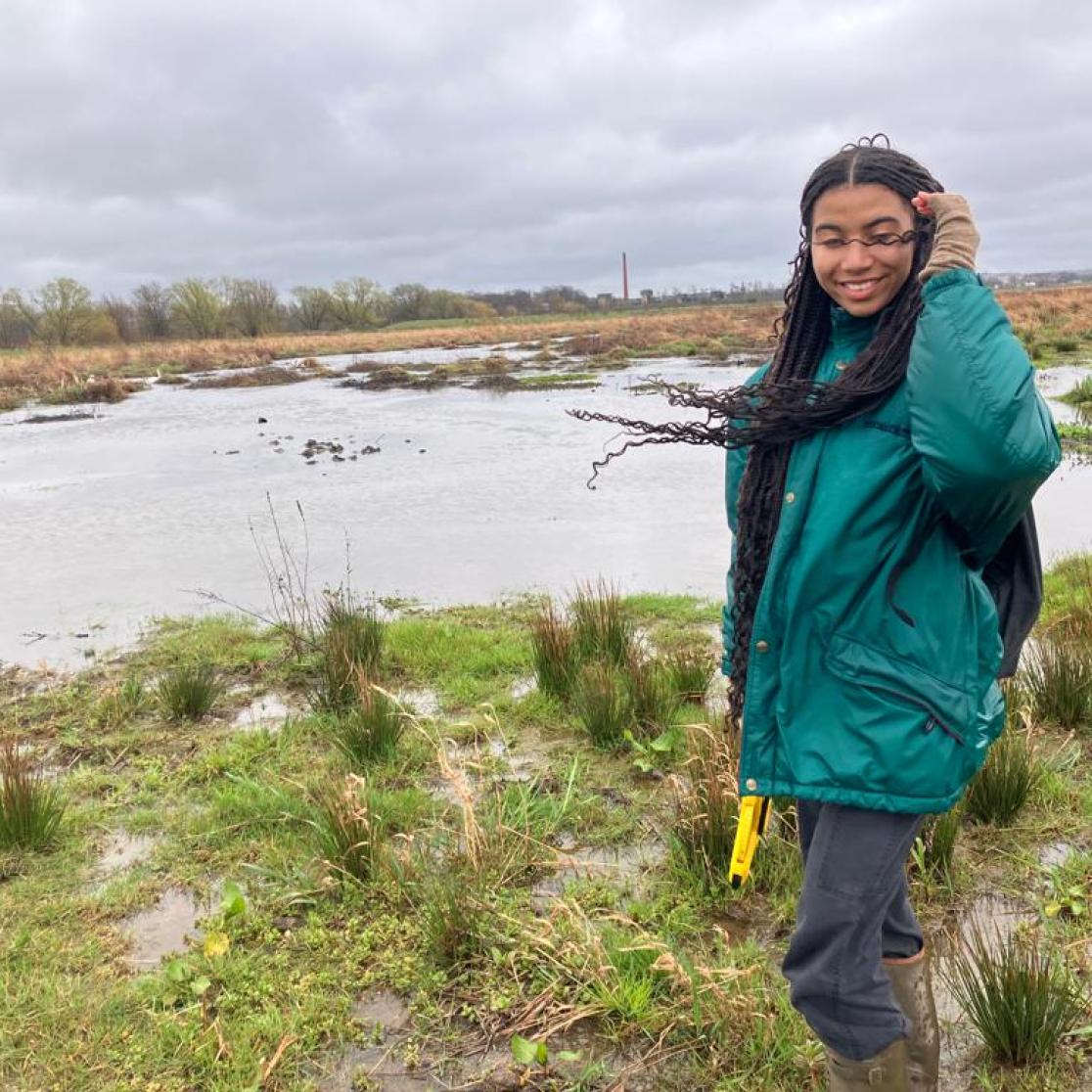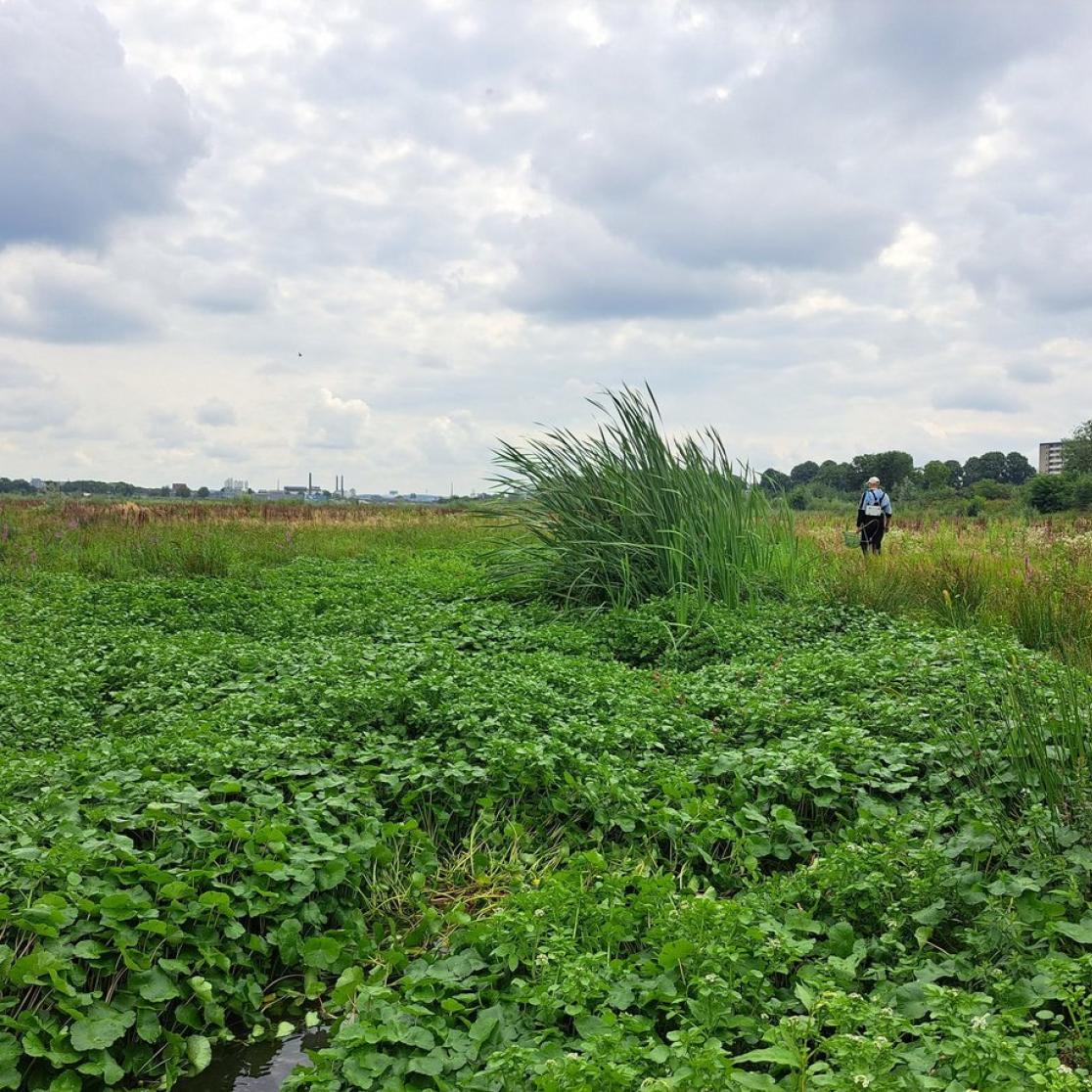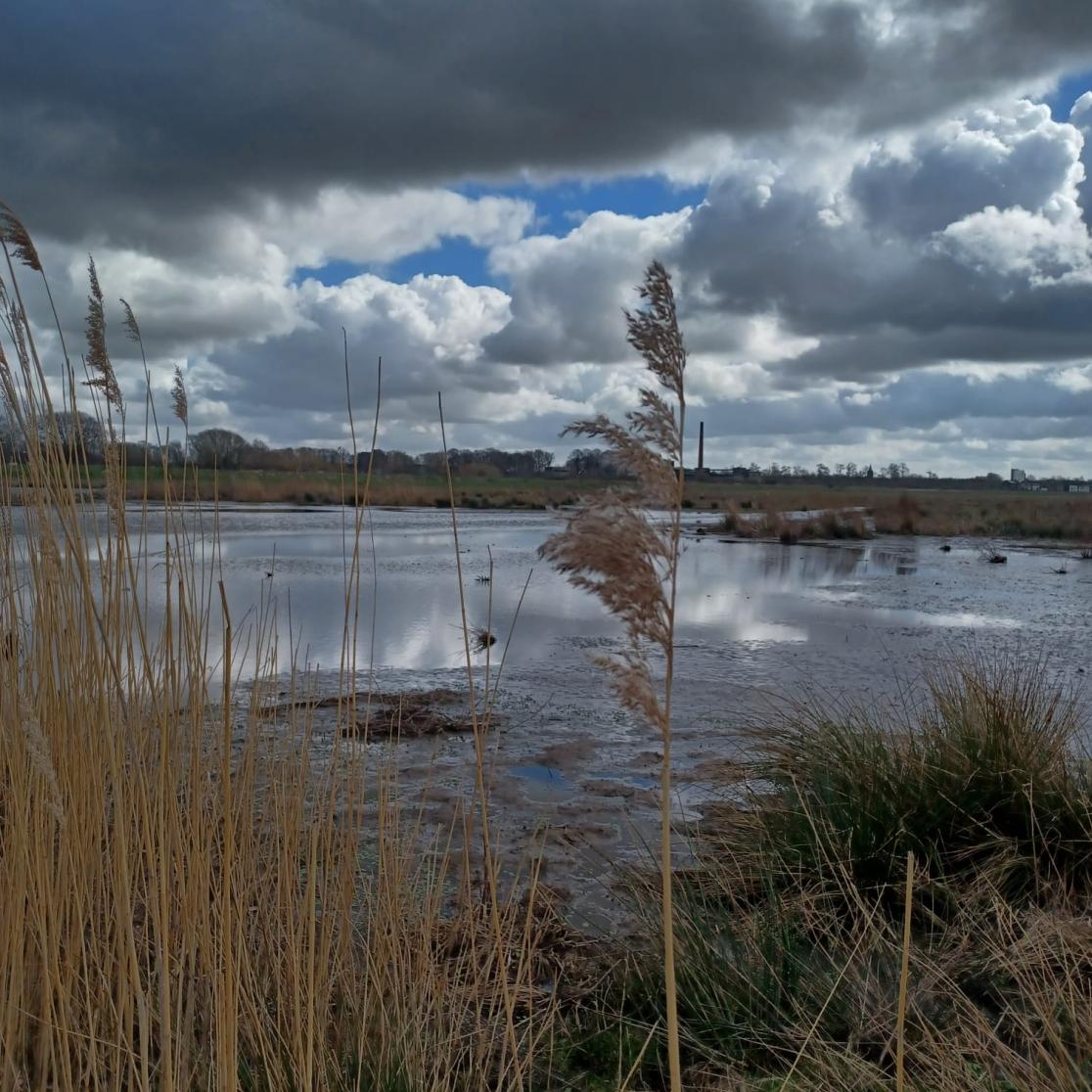From rain to mud: A successful start to the restoration of nature along the Grensmaas
Research on nature restoration along the river Maas turns out to be quite an adventure, as demonstrated by the study conducted by Sara Pastina and Maya Daumal. They investigated how plants, fish, and invertebrates find their way to their newly restored natural habitats.
Floodplains
After severe flooding at the end of the last century, the river Maas needed to be made safer. By excavating gravel, the river was given wider floodplains, creating more space for water to be channelled away. The floodplains along the Grensmaas, the stretch of river between Maastricht and Wessem, initially consisted of bare, flat expanses. Nature quickly took over. Students and biologists from the Maastricht Science Programme at the Faculty of Science and Engineering researched the recovery of nature in the area. Their conclusion: the restoration is off to a good start, with a variety of plants and animals finding their way to the floodplains. However, the restoration is fragile, threatened by non-native species.
"Last year, between February and April, I looked at the plants growing in the Bosscherveld floodplain," says student Sara Pastina. "That was sometimes difficult because, during rainy weather, puddles and streams form very quickly. At one point, I underestimated the depth of the mud and sank up to my waist. It took a while for a passerby to help me get out."

Even when the weather is favourable, research remains challenging. "At the end of winter, all sorts of plants start growing again. They are so small at that point that it’s really hard to identify them," Sara explains. Miraculously, she and her colleagues managed to name them. "Bosscherveld is special because it's situated between the Maas and the Verbindingskanaal, so there is water present all year round. We see all kinds of plants that thrive in floodplains; there is a lot of variation. The plants grow in the places that suit them best: areas that are either drier or wetter." Nevertheless, Sara observed something unexpected. Plants also grow in less favourable locations just because their seeds fell there. She considers this one of her most remarkable findings.
Little creatures
While Sara mapped the plant growth by following imaginary lines in a systematic manner, PhD candidate Maya Daumal similarly set out to systematically investigate the aquatic life, not just in Bosscherveld, but along the entire Grensmaas. "I am researching the diversity of fish and invertebrates such as worms, shrimp, mosquito larvae, and dragonflies", Maya explains. In the laboratories of the universities in Maastricht and Wageningen, Maya examined samples under a microscope, searching for the smaller aquatic creatures. "It's mainly the mosquito larvae, worms, and killer shrimp that I encounter," she adds.

The concept that nature may simply take its course is overly romantic and utopian. In a small area like Bosscherveld, surrounded by diverse human activity, a nature reserve must be maintained; otherwise, everything will be overrun.
Maya DaumalFish are abundant in the water. "The fishermen we met were often surprised by the species we caught. Especially at the mouth of the river Geul, we find many unique species." It is mostly the smaller fish that seek food and shelter in the pools and streams of the floodplain in Bosscherveld. How the fish find their way into these waters is still a mystery. Maya found species that are not typically caught in the Maas. "Perhaps the standard fish monitoring in the river does not capture the smaller fish," she speculates.
Invasive species
The presence of most of these fish provides an early indication that the restoration of nature is fragile. "At least 80% of the species we catch are exotic fish that don’t naturally belong in the Maas. Most of them are gobies," Maya explains. Last summer, both researchers observed an invasive plant, floating pennywort. This plant, originally from America, had overrun the floodplain.
“Floating pennywort thrives thanks to climate change. Freezing temperatures typically kill the plant, but it no longer freezes hard enough or often enough to prevent this invasive species from flourishing”, Sara explains. Nature managers now face the question of whether to combat the exotics or let nature take its course. For the primary purpose of the new floodplains—flood protection—it doesn’t matter what grows there. According to Maya and Sara, however, preserving biodiversity is certainly worthwhile.

Maintained nature
The floodplains along the Maas are a popular destination for locals and tourists alike. The researchers frequently encountered walkers. Sara notes, "They’re curious about what we are doing and start conversations. Once an area has a recreational function, it’s definitely worth maintaining the nature there." Maya continues, "The concept that nature may simply take its course is overly romantic and utopian. In a small area like Bosscherveld, surrounded by diverse human activity, a nature reserve must be maintained; otherwise, everything will be overrun."
Now, in the middle of winter, Bosscherveld presents a desolate sight. The breach in the dam in the Verbindingskanaal and sunken ships have led to various construction projects on the peninsula. The fragile restoration of nature seems to have been undone. But nature should not be underestimated. "I consider this a reset," says Maya. "Nature will recover on its own, and with a bit of help, this time the floating pennywort might not stand a chance."

Grensmaas project
Sara was one of the first to publish the scientific results of the research on nature restoration along the Grensmaas. Read her publication on the plants here. Last year, she graduated from Maastricht University. She is currently pursuing a master's degree at the University of Oxford. Maya is putting the finishing touches on her doctoral thesis and has enough data for at least five more articles. The story of the nature restoration of the Grensmaas is therefore far from over.